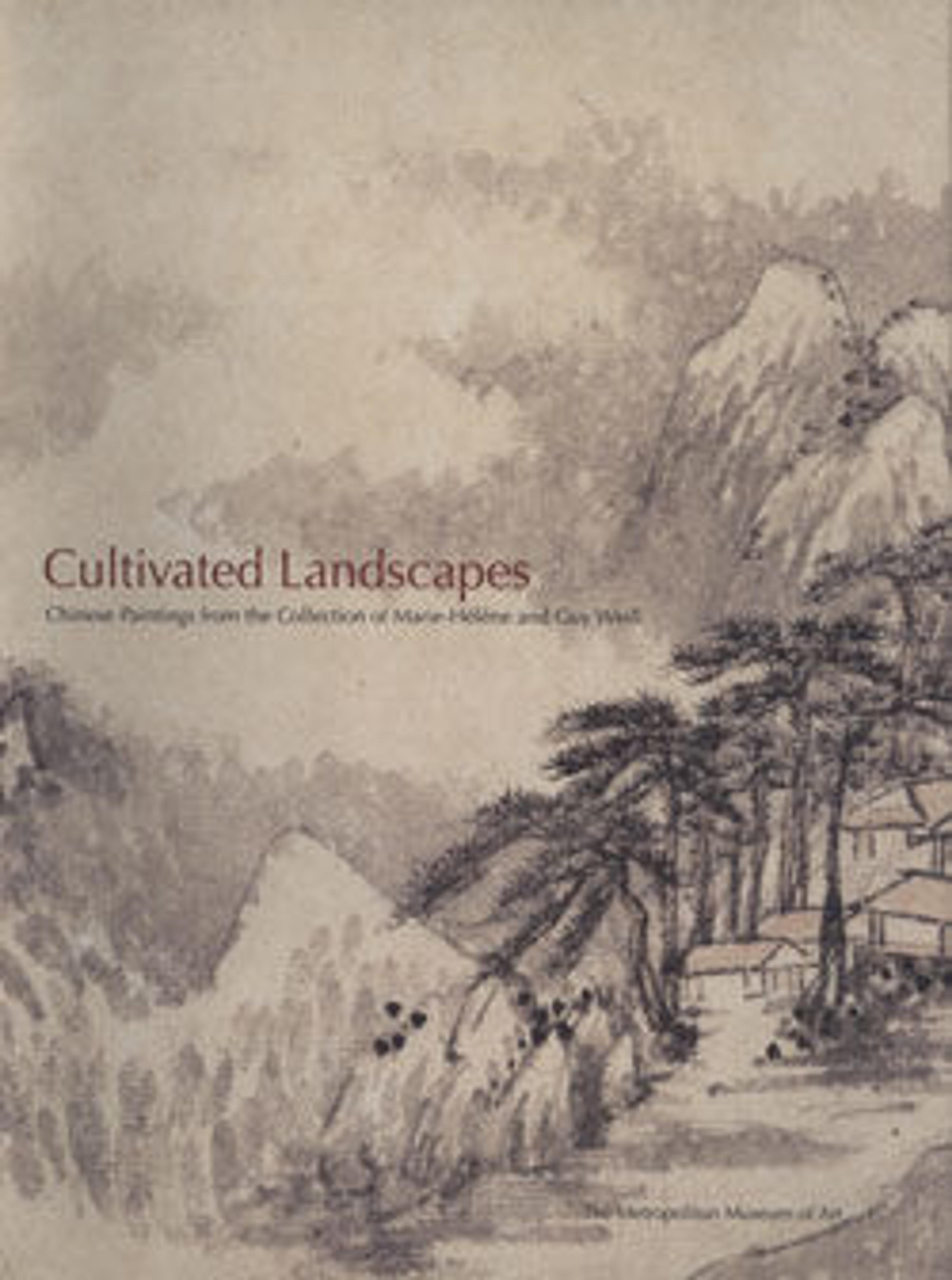Wooded Mountains at Dusk
Born on the Buddha's birthday, Kuncan took Buddhist monastic vows at age twenty-six and became an ardent Chan (Zen) follower. After the establishment of the Qing dynasty, he lived in Nanjing, where his friends included poet-painters who considered themselves loyal "leftover subjects" of the vanquished Ming dynasty. In 1659 he visited Yellow Mountain in southern Anhui Province and, inspired by the beauty of the site, decided to devote himself to painting. For Kuncan, painting was a path to the self, and he brought to his art the importance of selfhood espoused by later Chan practitioners.
Kuncan's landscapes, painted in the densely textured style of the Yuan master Wang Meng (ca. 1308–1385), are often accompanied by inscriptions that describe a physical, as well as spiritual, mountain journey. In Wooded Mountains at Dusk the artist depicts himself as a wandering pilgrim seated beneath a natural rock bridge:
I want to go farther,
But my legs are bruised and scratched.
The bony rocks appear chiseled,
The pines look as if they had been dyed.
Sitting down, I feel like a small bird,
As I look out at the crowd of peaks gathered before me.
Having ascended the heights to the brink of the abyss,
I hold fast and ponder the need to sincerely face criticism.
Wherever a road ends, I will set myself down,
Wherever a source opens, I will build a temple.
All this suffices to nourish my eyes,
And rest my feet.
(Yangming Chu and Maxwell K. Hearn, trans.)
Kuncan's landscapes, painted in the densely textured style of the Yuan master Wang Meng (ca. 1308–1385), are often accompanied by inscriptions that describe a physical, as well as spiritual, mountain journey. In Wooded Mountains at Dusk the artist depicts himself as a wandering pilgrim seated beneath a natural rock bridge:
I want to go farther,
But my legs are bruised and scratched.
The bony rocks appear chiseled,
The pines look as if they had been dyed.
Sitting down, I feel like a small bird,
As I look out at the crowd of peaks gathered before me.
Having ascended the heights to the brink of the abyss,
I hold fast and ponder the need to sincerely face criticism.
Wherever a road ends, I will set myself down,
Wherever a source opens, I will build a temple.
All this suffices to nourish my eyes,
And rest my feet.
(Yangming Chu and Maxwell K. Hearn, trans.)
Artwork Details
- 清 倣髡殘 蒸嵐昏巒圖 軸
- Title: Wooded Mountains at Dusk
- Artist: Kuncan (Chinese, 1612–1673)
- Period: Qing dynasty (1644–1911)
- Date: dated 1666
- Culture: China
- Medium: Hanging scroll; ink and color on paper
- Dimensions: Image: 49 1/2 × 24 in. (125.7 × 61 cm)
Overall with mounting: 8 ft. 5 1/4 in. × 31 5/8 in. (257.2 × 80.3 cm)
Overall with knobs: 8 ft. 5 1/4 in. × 34 3/4 in. (257.2 × 88.3 cm) - Classification: Paintings
- Credit Line: Bequest of John M. Crawford Jr., 1988
- Object Number: 1989.363.129
- Curatorial Department: Asian Art
Audio
7302. Wooded Mountains at Dusk
0:00
0:00
We're sorry, the transcript for this audio track is not available at this time. Please email info@metmuseum.org to request a transcript for this track.
More Artwork
Research Resources
The Met provides unparalleled resources for research and welcomes an international community of students and scholars. The Met's Open Access API is where creators and researchers can connect to the The Met collection. Open Access data and public domain images are available for unrestricted commercial and noncommercial use without permission or fee.
To request images under copyright and other restrictions, please use this Image Request form.
Feedback
We continue to research and examine historical and cultural context for objects in The Met collection. If you have comments or questions about this object record, please contact us using the form below. The Museum looks forward to receiving your comments.
